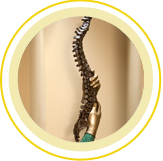 Dr. Max Cohen wrote an article to debunk athlete spine injury myths. Some myths addressed are:
Dr. Max Cohen wrote an article to debunk athlete spine injury myths. Some myths addressed are:
- Rest is always best
- Spine injuries always require surgery
- Equipment is the most important thing to prevent spine injuries
Read the spinal injury myth article below
Every athlete, from the weekend warrior to the professionals, is at risk for a neck or back injury. Although we often hear more about knee, ankle, shoulder, and elbow injuries among professional athletes than we do about spine injuries, they are more common than one might think. High-impact or extreme sports like football, wrestling, motocross, and mixed martial arts carry a higher risk of spine injuries than other sports. There are a lot of myths about spine injuries in professional sports. Let’s set the record straight on some of the most common misconceptions.
Myth- Spine injuries aren’t common in pro sports.
Due to the high-energy, high-impact nature of some sports like football, hockey, wrestling and motocross, it is very common for athletes to have neck, back, and spine injuries. Many of these injuries occur due to some type of impact, such as a tackle in football, a check in hockey, or a fall from a motocross bike. However, some injuries like stress fractures,muscle strains, and can be caused by overuse.
Myth- It’s OK to play through back pain.
Continuing to participate in a sport with a neck,back, or spine injury could make the injury much worse. In some cases, an athlete needs to make the decision to sit out or even retire to avoid further damage.
Myth- Rest is always best
Not entirely true. Rest may initially reduce pain and inflammation, but it will not treat the root cause of a soft tissue injury. It is important to seek a proper diagnosis and treatment plan beyond the initial rest period to recover fully from the damage. Rest alone is not enough to strengthen and heal the affected area.
Myth Spine injuries like spinal fractures and herniated disc always require surgery.
Herniated discs and spinal fractures may require surgery if the athlete has a very severe case or if more conservative treatment does not help. In the majority of cases, treatment begins with conservative methods. Even with conservative treatment, however, athletes can be sidelined for weeks or even months while they heal.
Myth- Spinal cord injuries always result in paralysis
Spinal cord injuries do not always result in paralysis, but they are still very serious. While fortunately rare, catastrophic spinal cord injuries resulting in paralysis, sadly still occur usually from a big hit or fall.
Myth- Burners and Stingers aren’t that serious.
Neck stingers, also called burners, are very common in football and often occur from a blow to the shoulder or neck. This injury affects a bundle of nerves called the brachial plexus, which branches out from the spinal cord. The branches from brachial plexus run down the arm, so a stinger can cause numbness, tingling, and burning in the arm. Although symptoms can subside quickly, an athlete should immediately be evaluated by a medical professional to evaluate for more severe nerve damage.
Myth- If an athlete needs a spinal fusion, their career is over.
Spinal fusion is a surgical procedure that involves fusing together vertebrae that are causing pain, creating one solid piece of bone. Fusions prevent motion between the vertebrae, as well as the stretching of the surrounding nerves, muscles, and ligaments. The success and outcome of spine surgery depend on the athlete, surgeon, and the severity of the injury. Though a spinal fusion does reduce some flexibility in the spine, it doesn’t necessarily mean an athlete’s career is over. Most notably, Peyton Manning had a spinal fusion in his neck, and was able to return to football after he recovered.
Myth- Equipment first — technique and training are secondary in preventing injuries.
Wrong! While injuries cannot always be prevented, professional athletes are trained to use proper techniques that minimize the risk of injury. In football, players are trained to use the shoulder as a main point of contact when making a hit, rather than the head or neck (spear tackling). Wrestlers are often taught to keep their heads up during a take-down and avoid dangerous moves. In general, athletes are conditioned to strengthen their core and back muscles, which helps to provide support to the spine. Though perhaps not as common as other sports injuries, spine injuries should be taken very seriously in sports, whether collegiate, professional, or otherwise. While not all injuries can be prevented, coaches, athletes, and team trainers must work in concert to mitigate the preventable ones.




